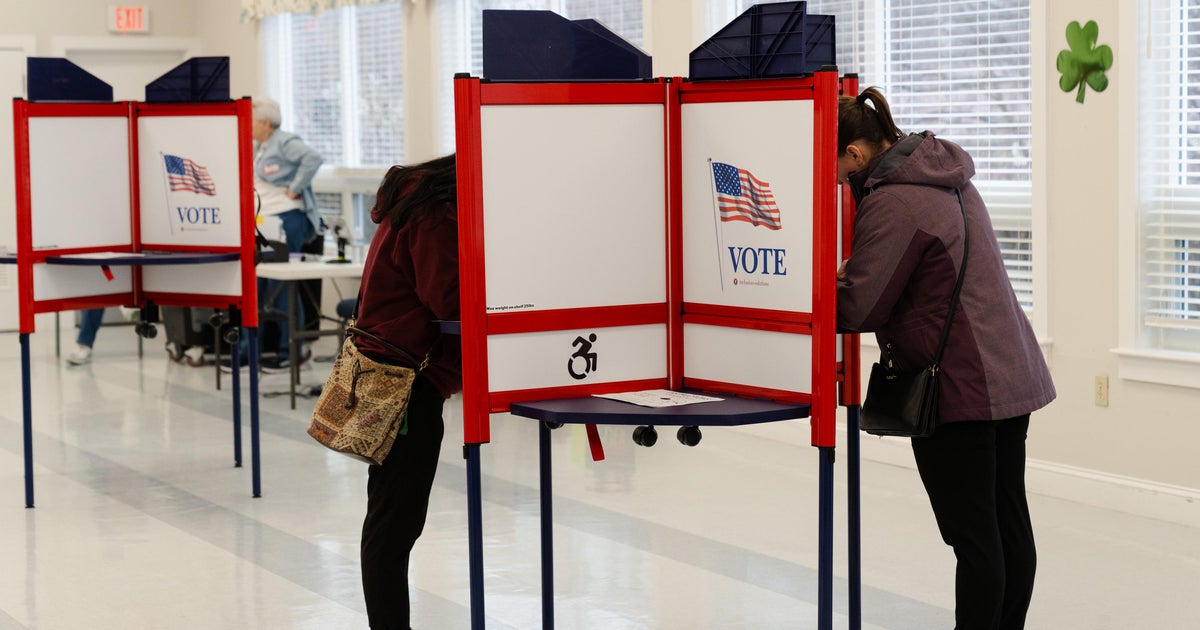What's immigration's real impact on U.S. wages?
President Donald Trump claims that curtailing immigration will boost workers' wages. That's the premise -- and the name -- of the RAISE bill two GOP senators introduced Wednesday, which aims to cut legal immigration to the U.S. in half and change the criteria on which immigrants are admitted.
Grappling with issues of immigration is a time-honored tradition in the U.S., which has absorbed successive waves of immigrants who then, after a suitable period of time, attempt to close the gates to the waves coming after them. But the economic evidence to back up this habit is decidedly mixed.
It's broadly accepted that immigration has a positive effect on the economy as a whole. Immigrants spend money on goods and services, start businesses, pay taxes and invent things. And most studies of immigration and wages have shown little or no effect: Immigration doesn't raise wages on average, but it doesn't decrease them, either.
However, some evidence exists that an influx of immigrants into low-skilled or low-paid jobs can depress wages for a particular group of native-born workers: high school dropouts.
But whether that evidence is accurate is hotly debated. The main study cited by the White House and immigration opponents comes from George Borjas, a labor economist at Harvard University. Borjas studied a particular situation: A six-month period in 1980 when some 125,000 immigrants came from Cuba to Florida, expanding Miami's labor force by more than 10 percent. He found that the immigrants' presence depressed the wages of low-skilled, native-born workers by 10 percent to 30 percent.
Other studies looking at the same incident (known as the Mariel boatlift) found no drop in wages, and some have criticized the Borjas study as flawed. For instance, the groups he studied were very small, sometimes less than 20 people, which makes the data subject to randomness.
"The statistical noise is so large, you can actually find whatever effect you want to find," said Vasil Yasenov, a postdoctoral scholar at the University of California-Berkeley who co-authored a paper critical of Borjas' research. "Because he made decisions to look at a very specific portion of workers, the sample size is low."
Yasenov reviewed 63 papers looking at immigration and wages and found Borjas to be a significant outlier. "I would say he's the only one pushing for these strong negative [wage] effects," he said.
The Mariel boatlift is a favorite of economic textbooks as an example of a natural experiment. But it's also misleading because it represents immigration on a much larger scale than the U.S. has ever experienced, and is likely to experience. Immigration in the U.S. has been a slow phenomenon for the most part. Immigrants currently make up about 15 percent of the population -- in line with historical averages.
More recent work has found the opposite. Abigail Cooke, an assistant professor of geography at the University of Buffalo, looked through 18 years of data on employment, focusing on immigrant diversity (meaning having a large portion of immigrants as well as immigrants from many different places).
That study found high diversity actually increases wages overall and has no effect on for low-skilled workers. "I don't see any evidence that this is dragging people's wages down," Cooke told CBS MoneyWatch. "I think that some of the worries that immigrants, and specifically low-skill immigrants, are the reason people's wages are stagnating, are just pointing the finger in the wrong direction."
Immigrants do tend to earn less than native-born workers, a gap that persists across age groups. But it's hard to make exact comparisons because immigrants and native-born workers rarely work the same jobs. Immigrants are more likely to work in maintenance, transportation, construction and food service, but also in computer, math and science jobs.
"Proponents of [merit-based immigration] systems tend to assume that the higher your wage, the more you're contributing to your host country, but lower-wage immigrants are contributing because they have different skills," said Jennifer Hunt, an economics professor at Rutgers University. When comparing groups of workers, "the more similar they are, the more likely you are to find negative wage effects. Even within high school dropouts, it matters whom you're looking at."
High school dropouts currently make up about 8 percent of the U.S. labor force. Companies who hire low-skilled workers -- particularly in areas like agriculture or hospitality have often complained that they can't find American workers willing to do the jobs.
The government has usually responds by admitting foreign workers temporarily. Congress voted earlier this year to allow 50,000 additional foreign workers into the U.S. (Some of them could be working at Mar-a-Lago.) The effect of those additional temporary workers could undo whatever impact restricting immigration would have, Hunt said.
On top of that, lowering immigration would slow the growth of the U.S. workforce and restrict GDP -- a metric the president often focuses on. "It will definitely reduce GDP without a doubt," said Hunt. "The more complicated question is: What it will do to GDP per capita?"
The history of immigration restrictions in the U.S. goes back practically to the country's earliest days as a sovereign nation. Under the Naturalization Act of 1790, only a "free white person" who had been in America for at least two years and was "of good character" was eligible for citizenship. The residency requirement was later increased to 14 years before eventually being set at five.
In 1882, the Chinese Exclusion Act established a 10-year moratorium on the entry of both skilled and unskilled Chinese workers, hundreds of thousands of whom had come to America beginning in the 1850s to work in mining, railroads and other jobs.
The Immigration Act of 1924 was even more draconian. It barred entry to anyone from Asia; capped the number of people admitted from Italy, Greece, Poland and other countries in Southern and Eastern Europe; and established strict quotas on immigrants based on a person's nation of origin.
It wasn't until the Immigration and Nationality Act of 1965 that these quotas were struck down and U.S. laws more broadly changed to open the country's doors.
The irony of this is not lost on economists, nearly all of whom point out the the biggest losers from today's immigrants tend to be yesterday's immigrants.
"We have this national identity, this nation of immigrants," said Cooke. "And yet over and over and over throughout history, we've pointed to the most recent immigrants and said, 'whoops, you're the problem.'"
CBS News' Alain Sherter contributed reporting.







